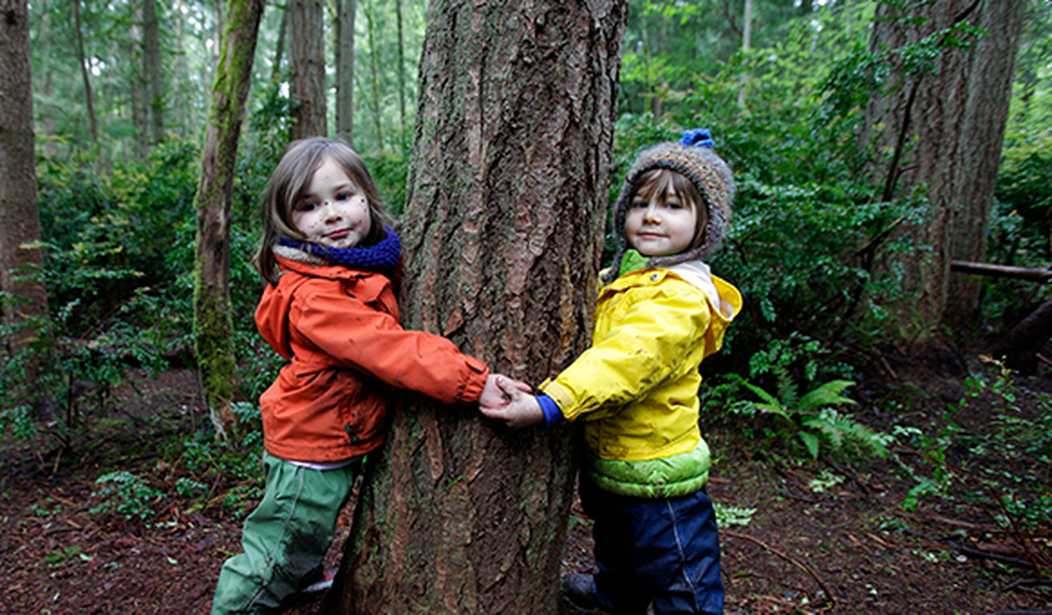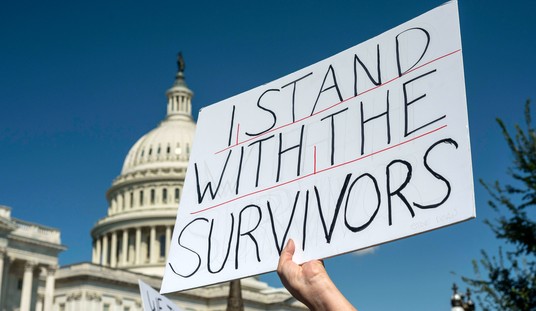The Centers for Disease Control and Prevention (CDC) has weighed in on the topic of reopening schools. It appears CDC staff wrote the guidelines without reading their own research. It is almost as if they would prefer hazmat suits become the fall fashion rage for those under 18.
The CDC guidelines are not mandatory, but they don’t seem to be based in current research or reality. Let’s start with the so-called ‘Guiding Principles’:
- Lowest Risk: Students and teachers engage in virtual-only classes, activities, and events.
- More Risk: Small, in-person classes, activities, and events. Groups of students stay together and with the same teacher throughout/across school days and groups do not mix. Students remain at least 6 feet apart and do not share objects (e.g., hybrid virtual and in-person class structures, or staggered/rotated scheduling to accommodate smaller class sizes).
- Highest Risk: Full sized, in-person classes, activities, and events. Students are not spaced apart, share classroom materials or supplies, and mix between classes and activities.
Measuring the Risk
CDC staff should know that, according to the CDC statistics, the incidence of severe illness in children is near zero and generally attributable to preexisting conditions. Senator Rand Paul went through the data during a Senate hearing and Dr. Fauci had to grant his premise:
If these guidelines for reopening schools are intended to protect teachers, regular education classes generally keep them naturally distanced from the class with short face-to-face interactions. A significant number of them are also in a low-risk age group. The CDC’s updated fatality rates project a 0.05% mortality rate for people ages 0-49. This does not seem to make a compelling case to completely change how schools operate.
Focus the Effort
Rather than reconfiguring the way schools operate, it would be a better use of scarce resources in a strained system to focus on appropriate accommodations for at-risk students and teachers. Perhaps a teacher with a pre-existing condition can lead virtual classrooms for children whose parents choose to continue with homeschooling. At-risk students could participate in these classes or attend facilities that have a different schedule and precautions as the CDC recommends above.
But the idea that you are going to control students mixing with other children outside their class after is patently insane. As is the idea that they are going to stay six feet apart. Does anyone at the CDC have children? They are social creatures who share stuff, hug each other, and whisper secrets.
Further, many parents rely on school district-provided transportation to schlep their children to and from school. This would include interactions with children from other grades and classrooms.
The CDC Just Gave Us the Biggest Reason to End the Coronavirus Lockdowns
CDC Research Makes This Seem Like Overkill
More of the CDC reopening schools guidelines seem to go directly at surface transmission of the coronavirus. Eliminating communal spaces, the prohibition of shared objects, and eliminating the use of playground equipment are on the list.
The CDC’s own research concluded that surface transmission is highly unlikely because transmission seems to be a product of the amount of viral exposure and the length of time. Surfaces are unlikely to house the number of virus particles required to transmit an infection and the individual is not in contact with them long enough.
This does not mean that increased sanitation of surfaces should not be in order. This is contained within the CDC guidelines for reopening schools and it is appropriate. But the idea that a child is likely to catch COVID-19 from a trip across the monkey bars or a zip down a slide seems laughable.
This equipment is also outside in the sun. DHS research has found that the sun reduces the half-life of the virus to a minute or two and this effect is enhanced by heat above 70 degrees. It almost seems like the school playground would be a very safe place for children to be. And recess or free time increases learning and overall health and decreases behavior problems.
The guidelines for reopening schools also have children marching down one-way corridors and encouraged to wear masks. If the goal is to make children into little reservoirs of anxiety who think the world at large is a terribly dangerous place, let’s do that. Because the climate cabal hasn’t gone far enough toward creating little balls of neuroses. How about no.
If a child lives with an at-risk adult, he or she can mask at home with other family members. This framing would be much less stressful because it would be about protecting someone else. Grandma has a heart problem, so we want to make sure she doesn’t get sick. Parents can explain this in an age-appropriate way and model the behavior.
The Kids Are Alright
Finally, the chance of children being a large factor in COVID-19 transmission seems to be exceptionally rare at best. In Iceland, where DeCode Genetics has done extensive testing and genetic analysis of patient virus samples, researchers could not find one case where a child infected an adult. A child in the U.K. came in contact with roughly 170 people after contracting COVID-19 on vacation and infected no one. Not even his siblings. Further:
On Thursday, the picture was further muddied by coverage of a large review of 78 available studies conducted by the UK Royal College of Paediatrics, which said: “The role of children in transmission is unclear, but it seems likely they do not play a significant role.”
Not really that muddy. Especially when additional information is added:
In Iceland, where 6% of the population was tested, none of the 848 children tested were positive. In a town in Italy where 2.6% of residents had the new coronavirus, 0% of children under 10 years tested positive.
Get Realistic
So instead of complete remaking school, which may not even be possible, the CDC could concentrate on a few basic things:
- Give grants for districts to install UV-C lights
- Recommend strict policies around ensuring the ill, staff and students, stay home
- Focus epidemiologists on appropriately identifying risk factors for severe COVID-19 disease
- Ensure educators and parents are taught about risk factors so that individuals and institutions can make healthy decisions for at-risk staff and children
- Encourage time outside during the school day
- Encourage good hygiene habits
- Ensure proper notification procedures are in place should a case of COVID-19 be identified
We are going to be living with this virus for the foreseeable future. Children need to have the option to return to schools and daycare as parents are returning to work. The current CDC guidelines for reopening schools g do nothing but reinforce the panic porn culture that has become all-too-common in managing COVID-19.
We can do better than this and effectively manage public health without terrifying our children.
Editor’s Note: Want to support PJ Media so we can keep telling the truth about China and the virus they unleashed on the world? Join PJ Media VIP and use the promo code WUHAN to get 25% off your VIP membership.










Join the conversation as a VIP Member